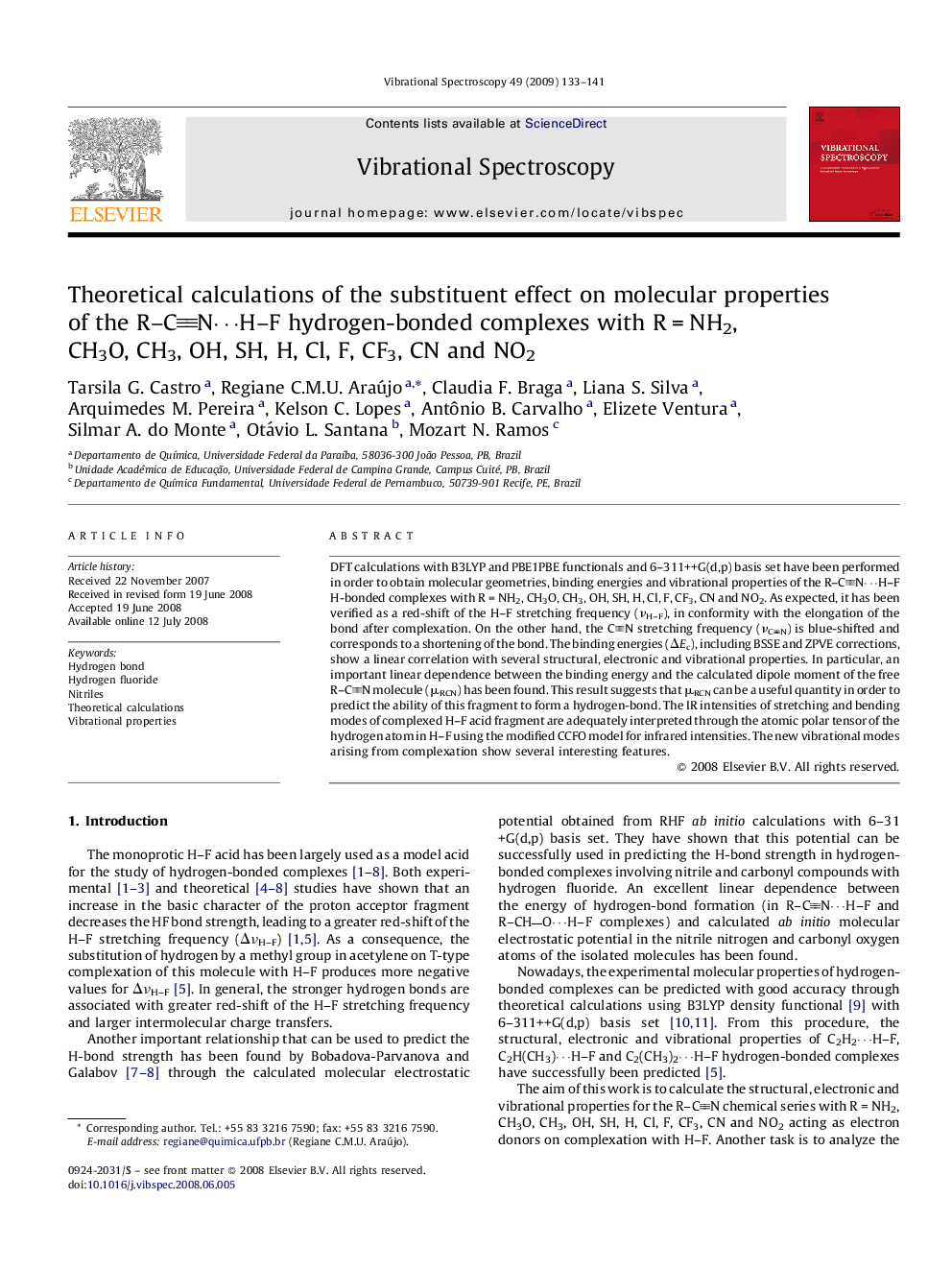| Article ID | Journal | Published Year | Pages | File Type |
|---|---|---|---|---|
| 1250330 | Vibrational Spectroscopy | 2009 | 9 Pages |
DFT calculations with B3LYP and PBE1PBE functionals and 6–311++G(d,p) basis set have been performed in order to obtain molecular geometries, binding energies and vibrational properties of the RCN⋯HF H-bonded complexes with R = NH2, CH3O, CH3, OH, SH, H, Cl, F, CF3, CN and NO2. As expected, it has been verified as a red-shift of the HF stretching frequency (νHF), in conformity with the elongation of the bond after complexation. On the other hand, the CN stretching frequency (νCN) is blue-shifted and corresponds to a shortening of the bond. The binding energies (ΔEc), including BSSE and ZPVE corrections, show a linear correlation with several structural, electronic and vibrational properties. In particular, an important linear dependence between the binding energy and the calculated dipole moment of the free RCN molecule (μRCN) has been found. This result suggests that μRCN can be a useful quantity in order to predict the ability of this fragment to form a hydrogen-bond. The IR intensities of stretching and bending modes of complexed HF acid fragment are adequately interpreted through the atomic polar tensor of the hydrogen atom in HF using the modified CCFO model for infrared intensities. The new vibrational modes arising from complexation show several interesting features.
